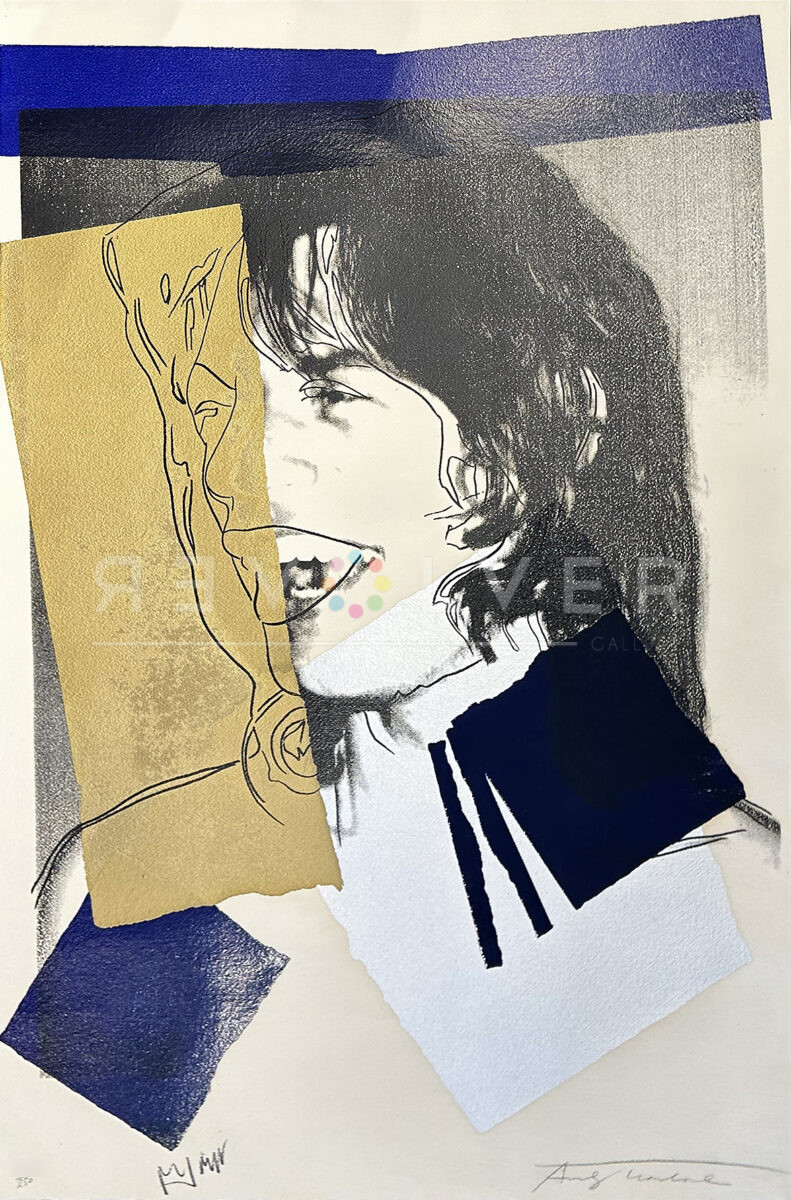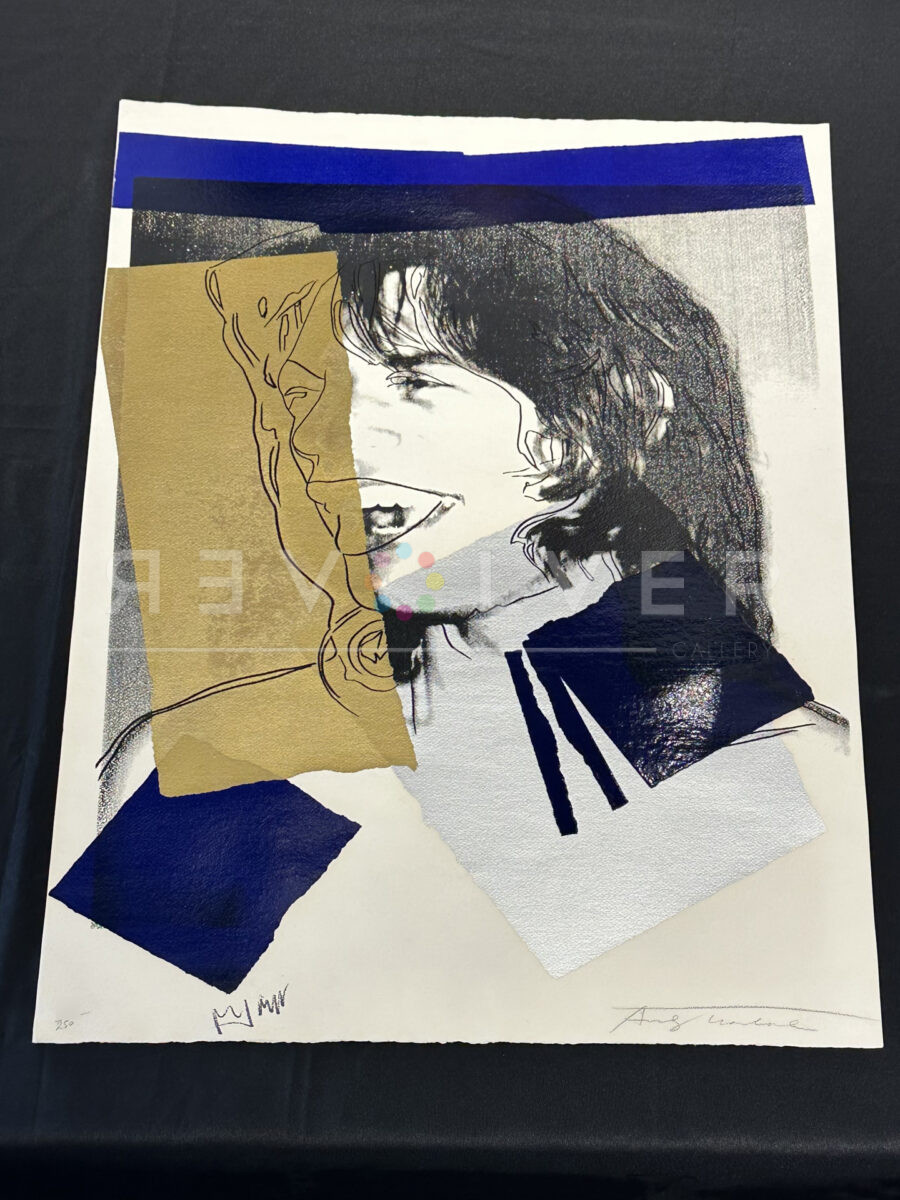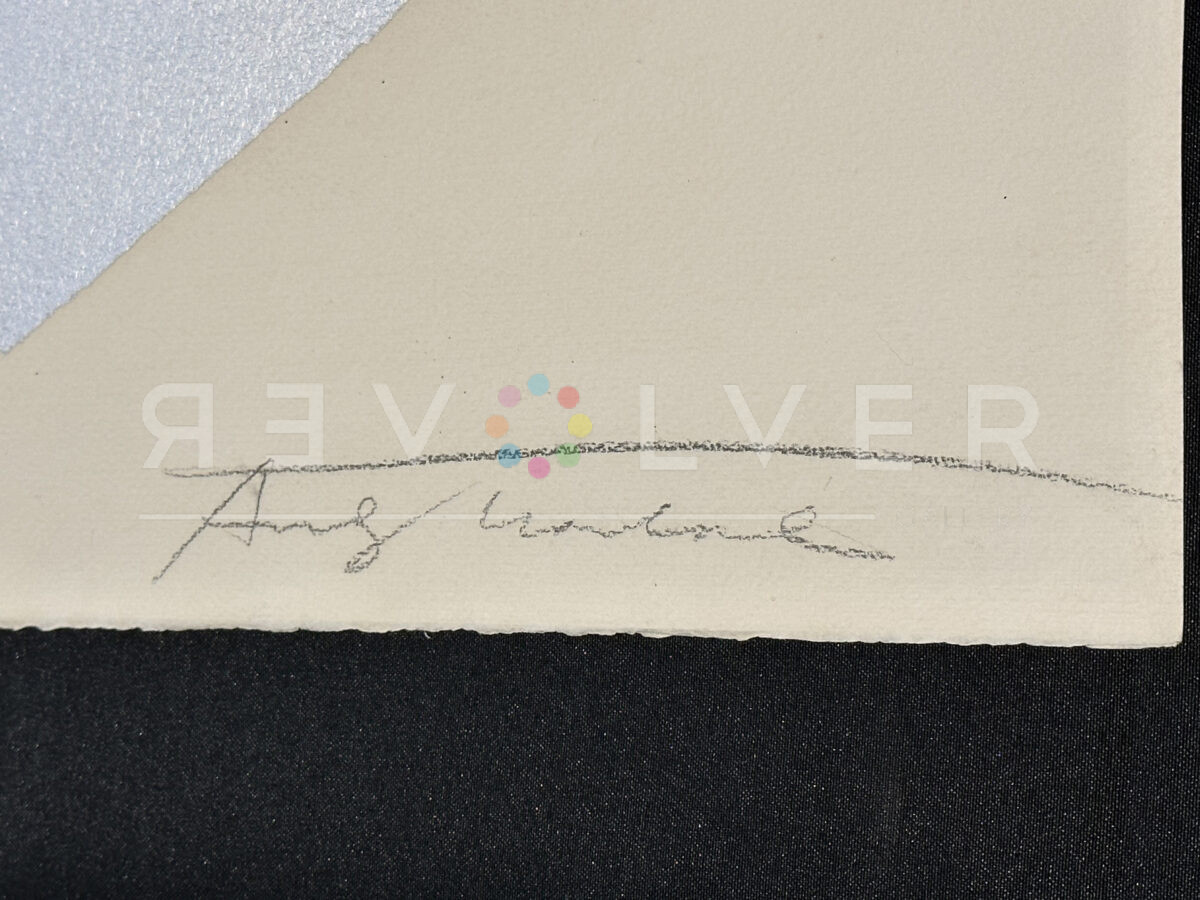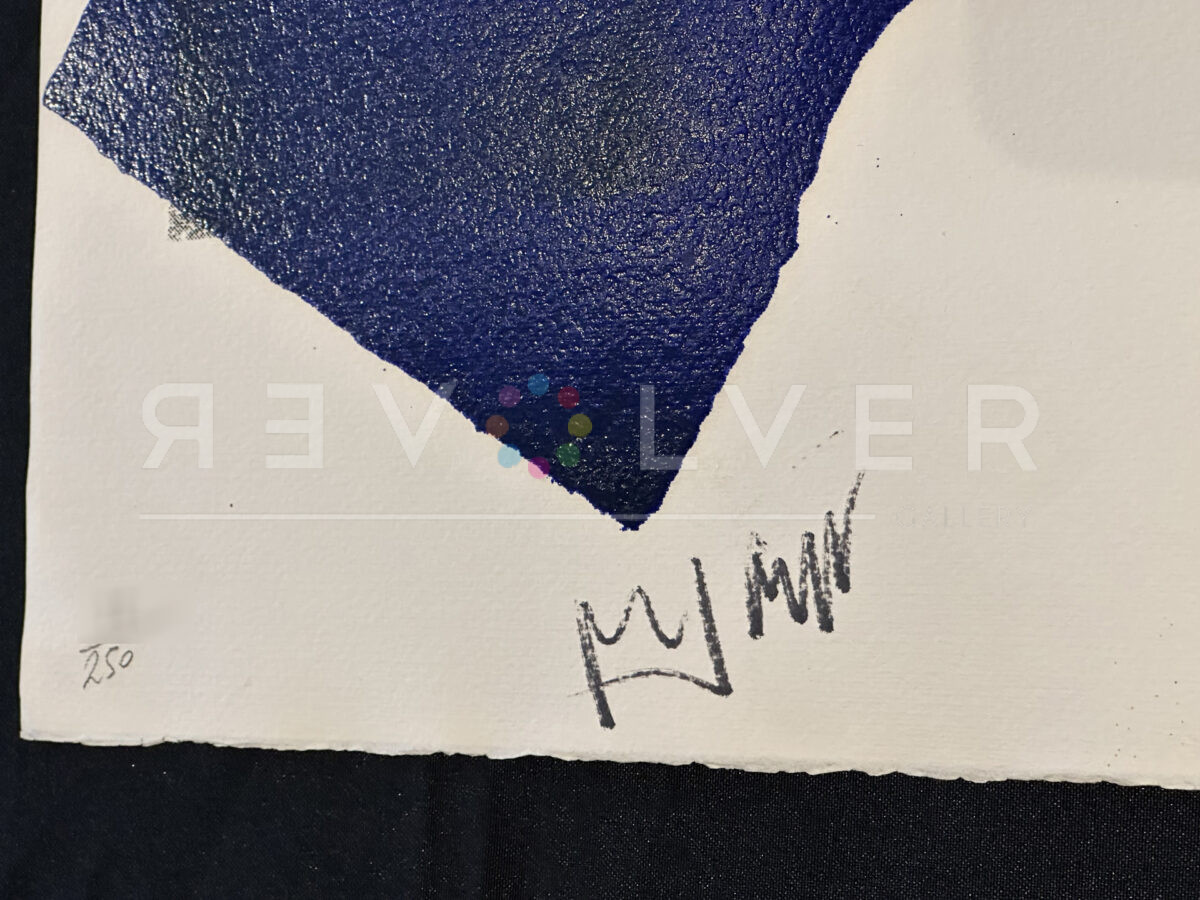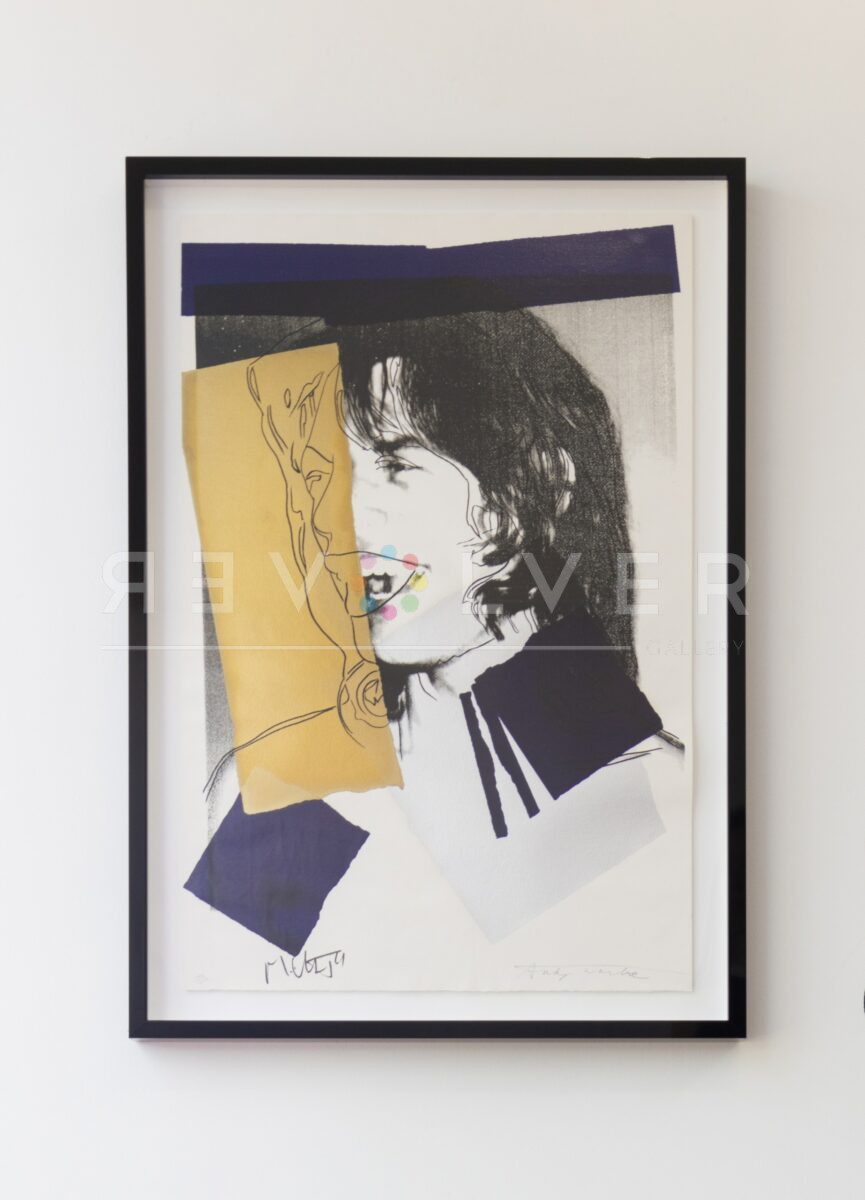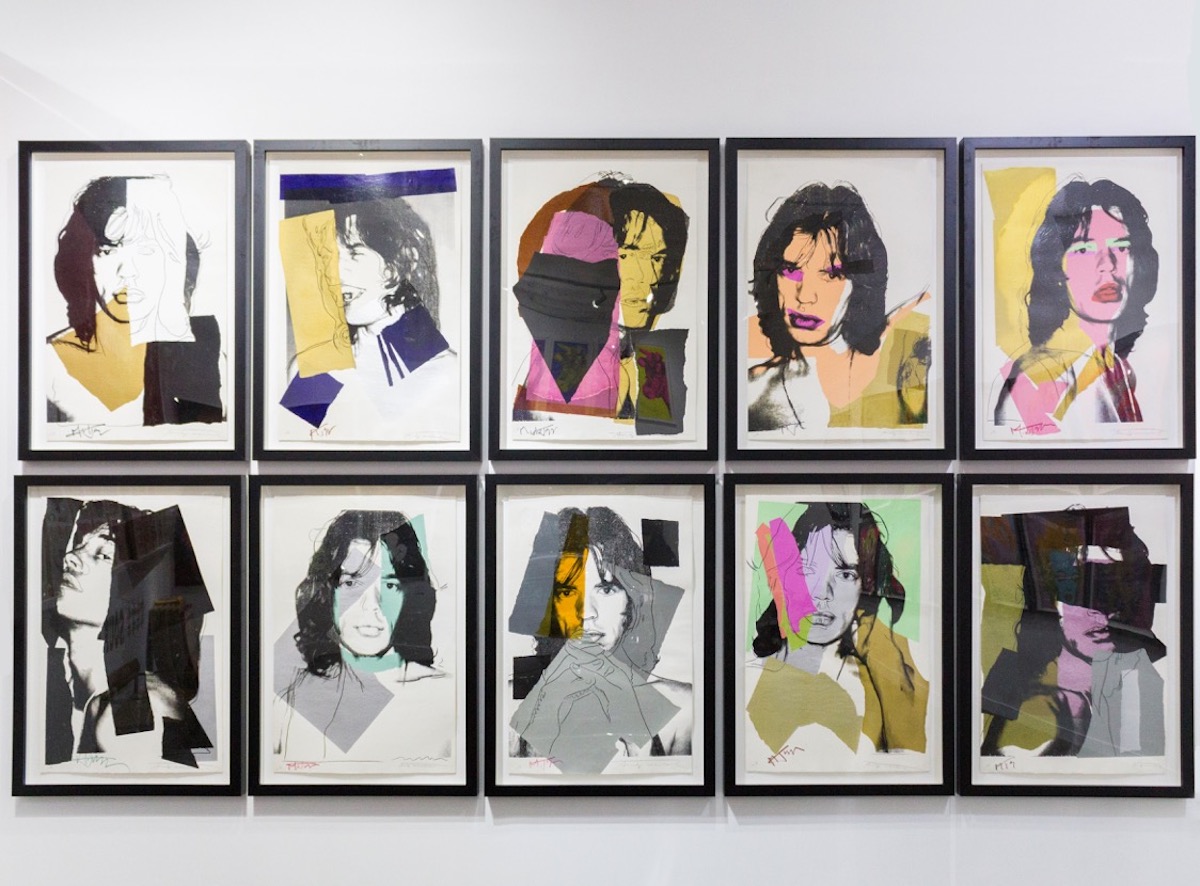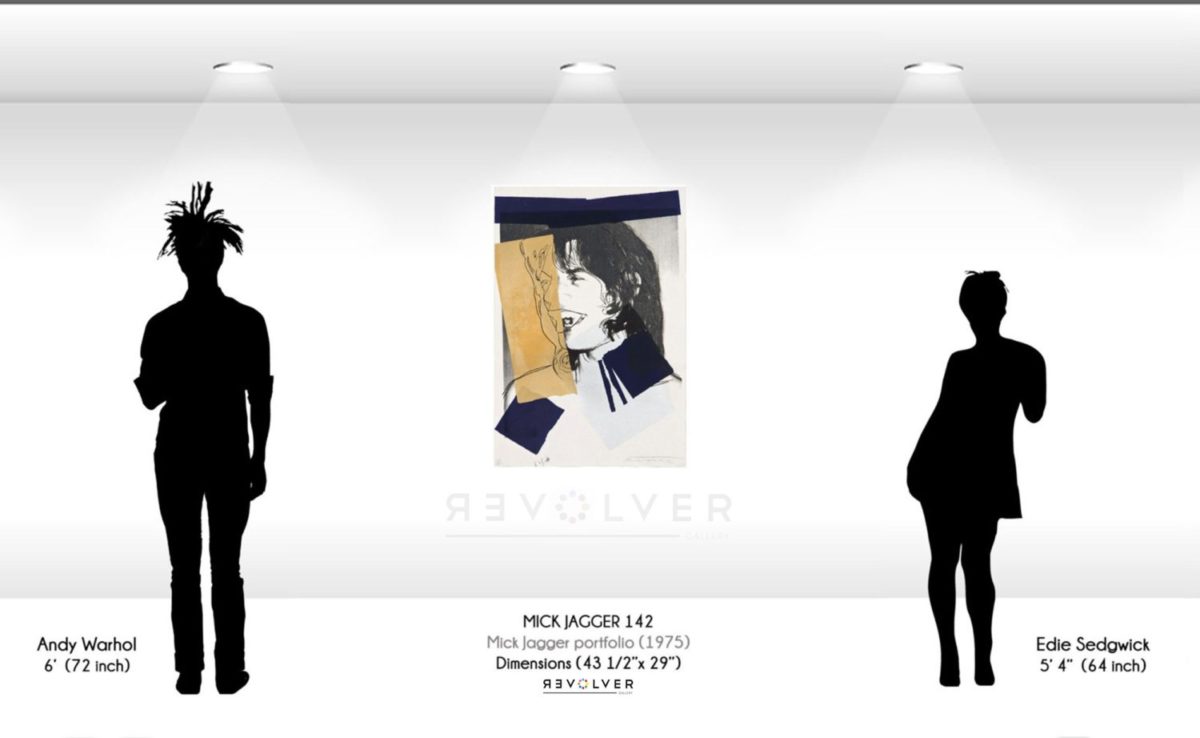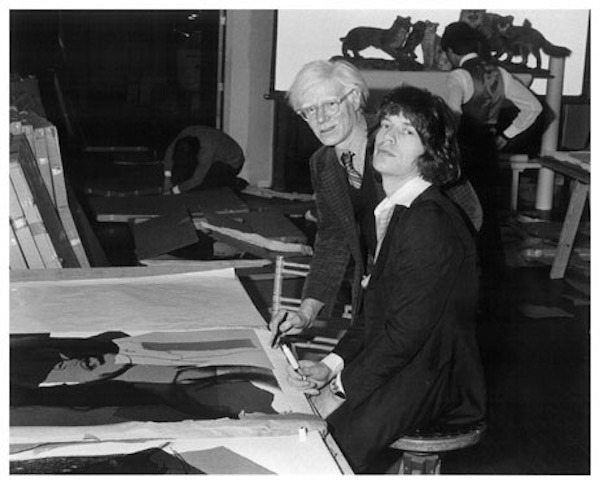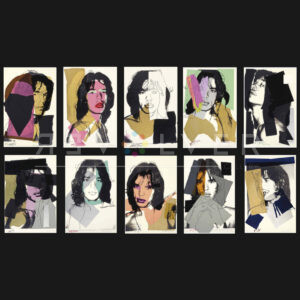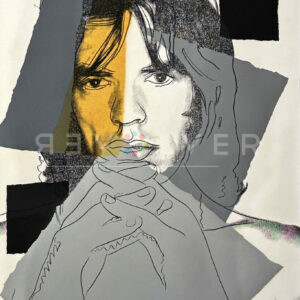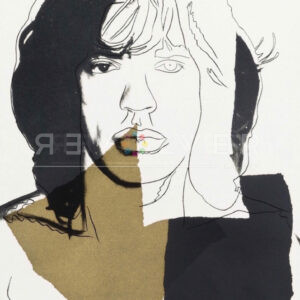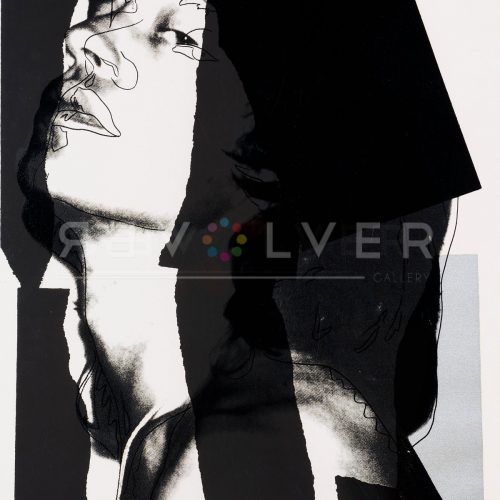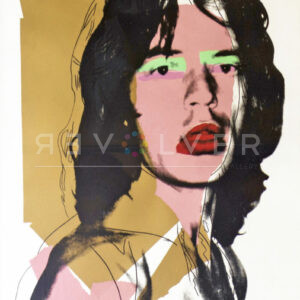Mick Jagger 142 is a screenprint by Andy Warhol included in his iconic Mick Jagger series (1975). Whereas many of Warhol’s portfolios include multiple famous figures, this one concentrates on Jagger alone. Like in his Campbell Soup Cans series, Warhol chose to repeat one subject from slightly dissimilar points of view. While his soup cans convey different flavors, each Mick Jagger screen print showcases the various sides of his personality. By this time, both Warhol and Jagger had gained massive popularity in America. They were at the pinnacle of their careers. As they were equally captivated by each other, it was no surprise that their partnership would produce momentous art.
Mick Jagger 142 is perhaps the most lighthearted in the portfolio, showing Jagger in a candid moment of laughter. Warhol often liked to display the light with the dark as well as the ups and downs that came with being a pop icon. He wanted to examine fame and celebrity from numerous angles. The line drawing placed on a golden backdrop is a feature unique to this print; it adds a sense of motion to Jagger’s features. The viewer can almost feel laughter radiating from the portrait. As with other works in this series, there is a strong emphasis on Jagger’s wide mouth, androgynous hair and animated eyes. Warhol’s collage elements are present but used with a lighter touch. He likely wanted to allow Jagger’s buoyancy to shine through this particular piece.
“If you want to be reminded of a certain period,” Jagger commented, “you can look at what Andy was doing then. He was very much in tune with what was going on. Of course, he was criticized for that, for being sort of trendy. But I think some people’s great forte is being so in touch”. In the series, Warhol highlighted one of the most powerful trends of the era—rock and roll.
Though he had previously illustrated the genre’s importance to American culture (namely in his Triple Elvis piece and his work on the Rolling Stones album cover, Sticky Fingers), this was an in-depth study of one singer. Jagger was instrumental to the sound of the ‘70s, and the Stones influenced pop culture as a whole. Mick Jagger 142 brings the 1970’s to life and captures its aura: Warhol saw the time as vibrant, but complicated.
Though Warhol still remained an astute observer during this time, he became more reserved after he was shot in 1968. The wildness of the Factory days had come to a close, and Warhol turned to new opportunities that excited him. The same year he completed Mick Jagger 142, Warhol founded Interview magazine. He also released his first book, The Philosophy of Andy Warhol. In the ‘70s what he called business art was his main focus. Mick Jagger knew how to use his persona to his benefit, and his popularity and success enthralled Warhol. Jagger respected Warhol’s artistry in equal measure. It was an ideal collaboration, and the portfolio remains one of Warhol’s greatest efforts. Mick Jagger 142 is a prime example of Warhol’s pop-art mastery, and his ability to represent the zeitgeist of his time.

